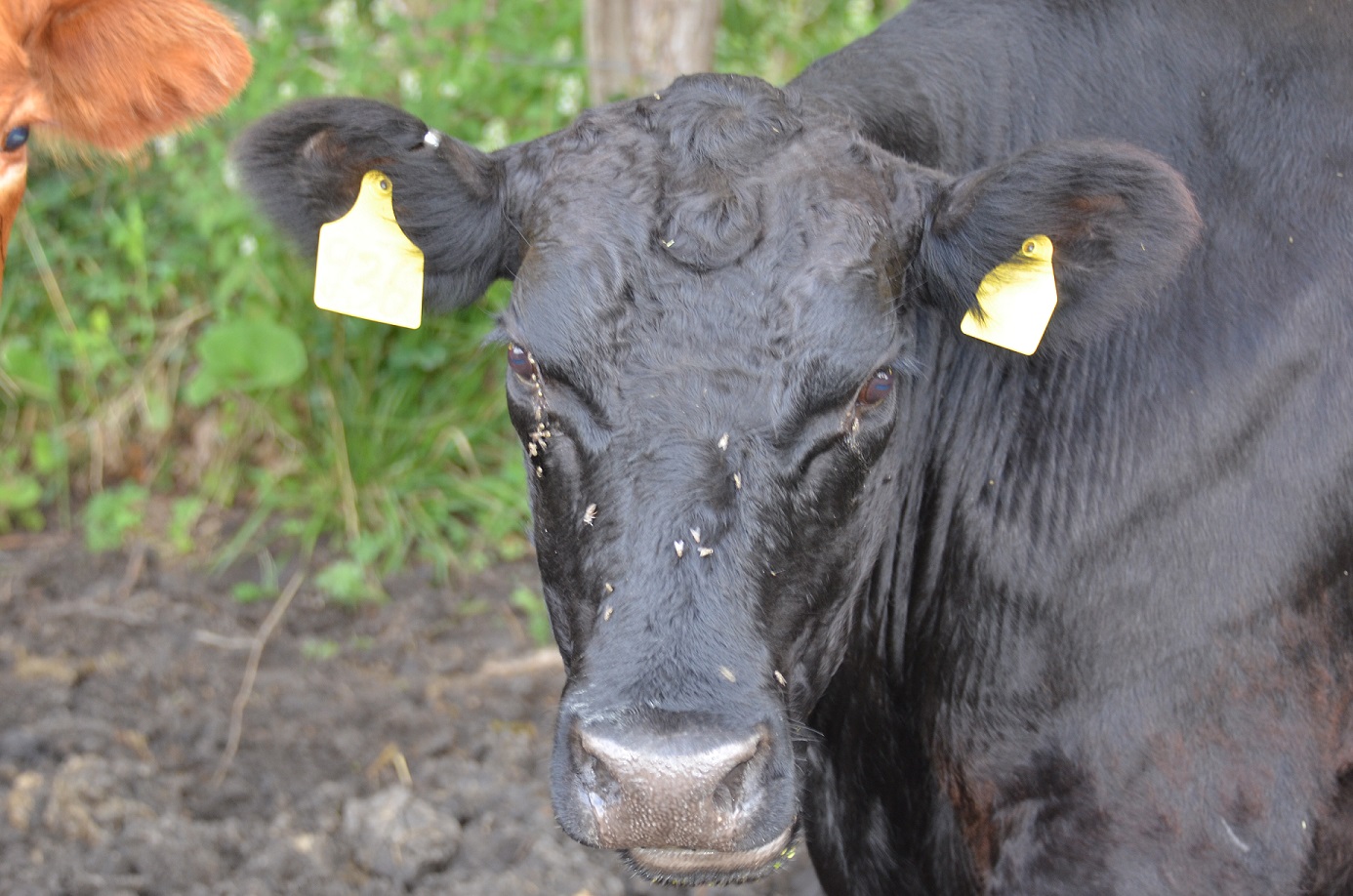Brent Plugge, Nebraska Extension EducatorBrian Vander Ley, DVM Epidemiologist, Great Plains Veterinary Education Center

Driving or riding through a pen or pasture of cattle is a favorite chore for many producers. Making sure our cattle have plenty of clean water, access to feed or forage and monitoring herd health are important aspects of daily care. When examining cattle, one important disease not to overlook is pinkeye. Pinkeye is a highly contagious infectious disease that not only affects cattle in Nebraska but worldwide. The incidence and severity of this common disease can vary widely from year to year. Although pinkeye rarely causes the death of affected cattle, it can cause substantial losses to the cattle industry through decreased weight gain, lowered milk production and treatment costs.
Pinkeye is known to occur at all seasons of the year and in all breeds of cattle. Excessive weeping of the affected eye and closure due to pain are the two signs most commonly observed. As the disease progresses, the cornea becomes cloudy or white. An ulcer frequently develops near the center of the cornea. Cattle with pinkeye keep the affected eye or eyes closed because of pain and to avoid bright sunlight. The course of the infection may run for several weeks.
Pinkeye is primarily caused by Moraxella bovis (M. bovis); however, other organisms have been isolated from eyes with infections resembling pinkeye. It remains unclear whether these other organisms are primary pathogens or opportunistic, secondary invaders. Pinkeye is caused by a combination of factors. Other suspected risk factors that contribute to clinical pinkeye are excessive ultraviolet light (sunlight), biological vectors (face flies, house flies, stable flies), plant material and dust.
Efforts to prevent pinkeye are directed at reducing transmission and minimizing irritation. Fly control can minimize both transmission and irritation; however, it is not a guarantee for prevention. Face flies can remain infected with M. bovis up to 3 days following feeding on infected material. Under experimental conditions, disease transmission is uncommon without the presence of face flies and is common with flies present. Fly control does have the added benefit of limiting the fly avoidance behavior that reduces productivity in cows and calves on pasture. The infection can also be spread by direct contact when the eye secretions of an infected animal are rubbed into the eye of an uninfected animal.
Reducing dusty conditions and providing protection against sunlight also aids in control. Cattle often have grass or weed seeds in their eyes, and these materials can irritate the eye and contribute to the development of pinkeye.
Cattle with pinkeye can be helped by prompt treatment which usually includes an antibiotic and often includes eyepatches to limit further irritation. Since the cornea heals slowly, any ulceration is likely to require several weeks for complete recovery. Vaccinations for pinkeye have met with variable results.
There are other infections that look like pinkeye so it is recommended that you consult with your veterinarian to assist you in the diagnosis, treatment and control of pinkeye.
Adapted from: Pinkeye in Cattle by Dr. Richard Randle, Retired UNL Extension Veterinarian
Interviews with the authors of BeefWatch newsletter articles become available throughout the month of publication and are accessible at https://go.unl.edu/podcast.
University of Nebraska-Lincoln
